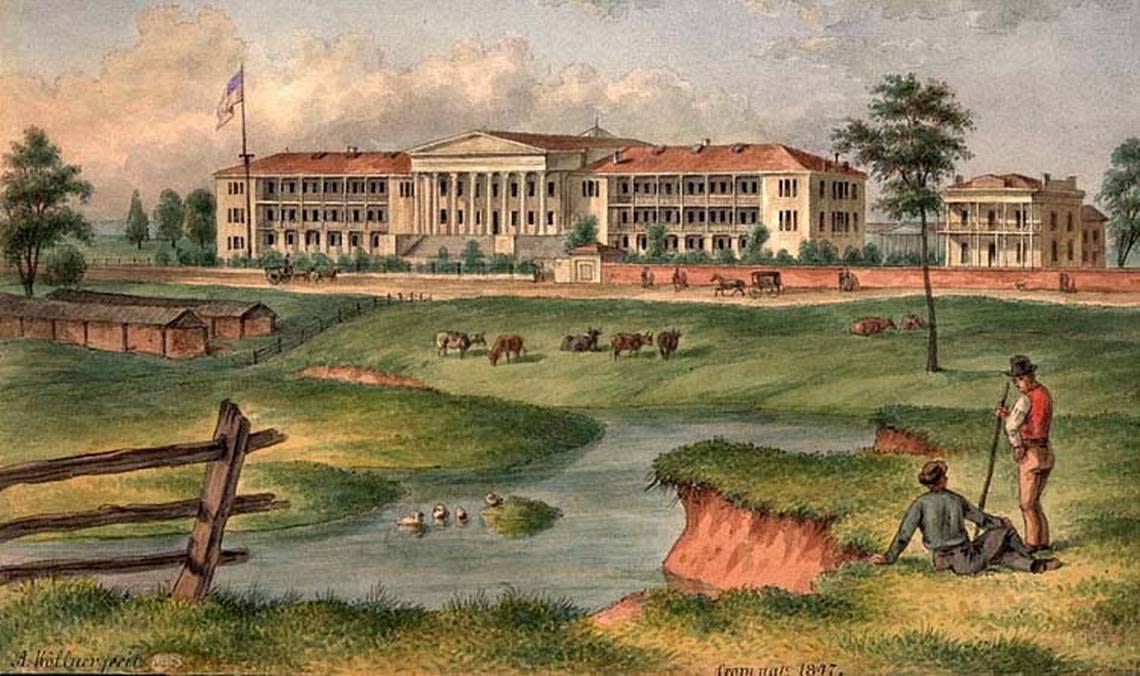How did Gulfport get the Armed Forces Retirement Home? The long history begins in 1811.

When it comes to providing a nurturing space for retired and permanently disabled veterans of the armed forces, there are only two federal retirement homes in the entire United States. One is situated in the heart of Washington DC, while the other finds its home on the Mississippi Coast in Gulfport.
In the early years of the American government, pensions for wounded, disabled, or retired service members were not granted by the federal government. The new republic was cautious about offering lifetime payments or support to veterans, as it went against the prevailing “no standing-army” mindset. Consequently, assistance for veterans was initially limited in scale.
Each branch of the service made minor attempts to care for its retired officers, but the responsibility of providing for oneself during and after service ultimately fell on the service members.
It wasn’t until February 26, 1811, that Congress authorized the creation of naval hospitals to cater to the nation’s sailors and Marines. The first naval hospital was established in Philadelphia under the guidance of Secretary of the Navy Paul Hamilton. By 1834, it became known as the Naval Asylum, aimed at supporting “decrepit and disabled naval officers, seamen, and Marines.”
In 1851, Congress authorized a military asylum to be created for “relief and support of invalid and disabled Soldiers of the Army of the United States.” The Soldier’s Home was established in Washington DC, and satellite facilities were set up in several other states.
Inhabitants of these homes were referred to as inmates and were expected to work to earn their keep.
On the eve of the Civil War, there were around 80,000 veterans from previous conflicts across the nation. Many of these veterans were primarily admitted and treated at several dozen state and local homes specifically created for military veterans.
The aftermath of the Civil War saw the veteran population surge to over 2 million, overwhelming the capacity of the Soldiers’ Home and the Naval Asylum. In response, President Abraham Lincoln authorized the establishment of the National Asylum for Disabled Volunteer Soldiers (NHDVS) to provide housing and care for Union veterans in need.
Over the next five decades, the NHDVS established 11 additional hospitals and homes, along with various resources, to cater to the nation’s veterans. In 1930, this organization transformed into the Veterans Administration, which eventually became the Department of Veterans Affairs in 1989.
Even by the late 1800s, pensions varied wildly depending on the branch of service and injuries sustained. Therefore, many states took the initiative to establish their own homes for veterans residing within their borders. Despite this, the asylums, state homes, and NHDVS remained entirely separate entities.
In 1889, the Naval Asylum was renamed the Naval Home. However, in 1976, the Sailors Home had outgrown its capacity and had no room to be expanded or renovated. The Naval Home was transferred to Gulfport Mississippi, on approximately 40 acres of land that used to house the Gulf Coast Military Academy for boys.
The new location offered residents a chance to explore the resort towns of Gulfport and Biloxi and enjoy the restaurants and scenic shoreline.
In 1990, the federal government introduced the Armed Forces Retirement Home (AFRH) as the sole federal entity that provides a military retirement community. AFRH took over the management of the Soldiers’ and Naval Homes, re-branding them as AFRH-Washington and AFRH-Gulfport, respectively.
Hurricane Katrina devastated the previous structure in 2005 and the residents were transferred to AFRH-Washington. Reconstruction of a more modern building was completed in October 2010 to withstand the effects of a category 5 hurricane.
Much has changed since the initial opening in 1811. AFRH-Gulfport extends its in-home services to veterans who served in active combat zones, suffer from service-connected disabilities, or retired after 20 years of service. It currently offers an array of amenities, including a pool, library, theater, and organized tour groups, while allowing residents the freedom to come and go as they please.

